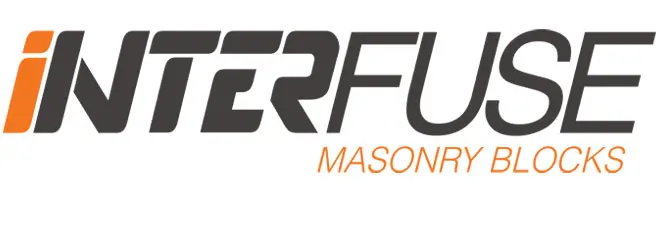Accredited manufacturer of masonry blocks
Optilyte Insulation Units
Ultra-lightweight, high-insulating masonry units with fire resistance, easy handling, and reduced load on floors, meeting HSE guidelines.

Produced in solid form, Optilyte units are extremely light, grey in colour and give an open textured finish. The face of the Optilyte unit provides an ideal key for plastering.
Standards
Optilyte units comply with BS EN 771-3 and associated test standards.
Key Features
Key Features of High-Strength Masonry Blocks
- Manufactured with expanded clay lightweight aggregate
- High Insulating Value
- Ultra Lightweight Material
- One hand lift - complies with HSE Guidelines on Manual Handling
- Reduces Loads on Floors and Structure
- High Fire Resistance
- Low Moisture Movement
- Manufactured to BS EN 771-3 and associated test standards
- Work Face 440mm x 215mm
Composition
Optilyte ultra lightweight units are manufactured from expanded clay lightweight aggregate and cement. Optilyte units are manufactured from a special kind of clay which through heat expansion is transformed into lightweight porous granules with numerous cavities, giving Optilyte its incredible lightweight properties.
- Thermal Conductivity
- Thermal Resistance
- Sound Insulation
The thermal conductivity of Optilyte ultra lightweight units has been tested by an independent laboratory and is supported by British Calibration Service Approval Test Certificates.
THERMAL CONDUCTIVITY
| OPTILYTE 3.6N/mm2 | W/mK (LAMDA VALUE) | |
3% | 5% | |
The equivalent thermal resistance of Optilyte units shown in the table has been calculated in accordance with the procedure laid down in the CIBSE Guide A3 1999.
THERMAL RESISTANCE
SOLID FORMAT: THERMAL RESISTANCE ‘R’ m2K/W | |||||
WIDTHS mm | 75 | 100 | 140 | ||
3% m/c | 0.38 | 0.50 | 0.70 | ||
The above values have been adjusted for mortar bridging to comply with Approved Documents L1 2010.
The sound reduction value of walls constructed of Optilyte units is based on the mass law approach, 100 – 3150 Hz frequency range. A single leaf partition wall plastered both sides using a 100mm Solid unit will give a sound reduction of approximately 40dB.
Available in Solid format.
Face work size is 440mm x 215mm.
Tolerances as EN 771-3, Tolerance category D1.
Unit length and height +3, -5mm.
Unit width average +3, -5mm.
Relationship of density / strength approx (solid units).
EN772-13 Gross Dry Density – Category II Materials.
3.6 N/mm2 Solid- 650 Kg/m3.
Minimum compressive strength of Optilyte Solid units is 3.6 N/mm2.
EN 1745 Table A3 Water vapour diffusion coefficient μ 5/15.
Static modulus of Optilyte is approximately 3-8kN/mm2.
As tested to EN 772-14.
Total movement = 0.42 mm/m.
Frost-resistance in accordance with PD 6697. Not to be exposed.
Declared Value 0.15N/mm2 in accordance with EN 998-2 Annex C.
Coefficients of linear expansion is 10 x 10-6 /0C.
The combination of Optilyte units and insulation material achieves ‘U’ Values of current regulations with ease.
Fewer movement joints.
Good for plaster – no cracking.
Ideal for tiling applications.
Less maintenance.
Breakages under 1% on site trials.
Assists good site housekeeping.
Good economy.
Ideal for direct nailing.
Provides easy and true drilling.
Drill and plug at speed.
Excellent for holding fixings securely.
Easily cut using a bolster.
For heavy cantilever loads use chemical fixing.
Open texture providing good key for plastering.
No bonding agents required.
Ideal for both lightweight and dense plaster.
It is advisable to store Optilyte units clear of the ground and to provide weather protection for the packs and incomplete work. We recommend that packs be stored on site no more than two cubes high.
Interfuse Ltd operates a formalised Quality Assurance system at both Syston and Gainsborough plants. All masonry units are subject to stringent quality control checks and are tested daily in our own laboratory. A documented factory production control system is in operation with regular checks made on raw materials, production and finished units. A stock control system is in operation with written procedures for non-conforming products. All products are produced to the current European Standards.
Each pack is marked for traceability of product and unit clarification as given on the delivery ticket.
The environmental impact of Optilyte constructions can be assessed by referring to BRE’s Green Guide to Specification, with many constructions achieving the highest A or A+ rating.
At the end of the life of the building, Optilyte units, which are inert, can be crushed down and recycled. Their use in buildings will far exceed the usual 60-year design life expectancy, making Optilyte a very sustainable material.
Download Brochure
- Fire Resistance (Hours)
- Delivery / Data Load
Expanded clay aggregate is processed at approximately 1150ºC – melting point in excess of 1250ºC.
Optilyte units are non-combustible and classified Euroclass A1 to EN ISO 1182.
The following Fire Resistance table is based upon EN 1996–1–2: 2005, Table NA.3.1 and NA.3.2. These are valid for walls without finishes, designed to EN 1996,Part 1–1.
FIRE RESISTANCE (HOURS)
| BLOCK THICKNESS (mm) | |||||
(CRITERIA) | 75 | 100 | 140 | |||
SOLID UNITS | ||||||
NON-LOADBEARING | (E1) | 2 | 4 | 4 | ||
LOADBEARING | (RE1) | – | 2 | 3 | ||
Optilyte ultra lightweight units are delivered in crane off loaded packs from our two factories at Syston and Gainsborough. Banding and shrink wrapping available on request subject to special quotation.
Prices Quoted per 10 units (9.88 blocks per m2).
DELIVERY LOAD DATA
APPROXIMATE NO. OF OPTILYTE UNITS PER LOAD | |||
100mm SOLID 3.6N/mm2 | 19T RIGID 1620 | 24T ARTIC 2160 | 90 UNITS PER PACK |

